The Forward Way – learning and growing from challenges.
The industry is undergoing a structural change that requires new products. We want to accompany you on this exciting path and are an experienced partner in mastering the challenges of the future. We help to shape the challenges with new materials, disruptive design approaches and production approaches. An excerpt of our standardised service offers gives an insight into our way of working. Our goal is to work with you to reduce uncertainty and learn quickly to bring successful products to market.
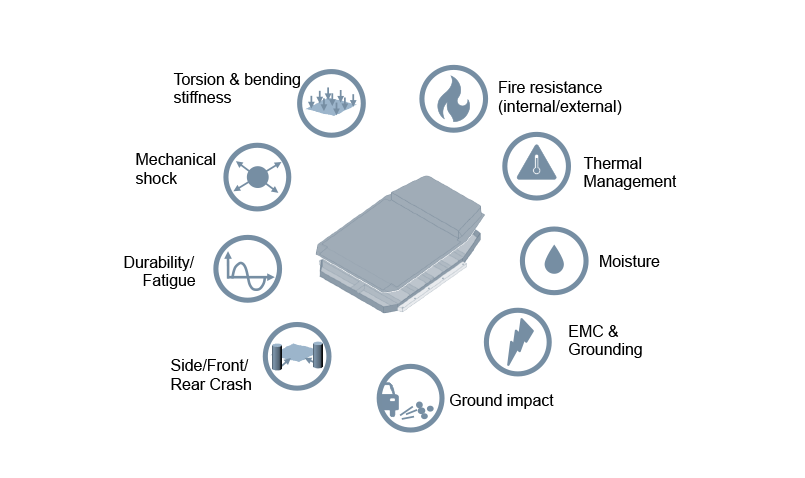
Battery Enclosure Design
A complex subsystem which demonstrates the power of a mixed material composite intensive design.
- The challenge is flexibly adapting the battery enclosure design to dynamically changing boundary conditions
- The electrification revolution has only just begun
- Energy storage (cells), powertrain and vehicle configurations are in their early stages of maturity
The FE approach:
- Holistic development of high voltage battery structures from the cell through the enclosure and complete vehicle integration, considering the respective functional and performance goals
- Comprehensive understanding of regulatory and technical requirements and alignment around your unique product and customer requirements
- Complete toolbox of materials (and material cards) and manufacturing processes including fiber reinforced polymers and composites, metals, specialty materials and their associated joining technologies
- “Simulation Driven Design” accelerates concept development, provides optionality throughout the program and, ensures visibility to meeting cost and performance goals at each stage of the program
- “Production Based Engineering” delivers a TRL (Technical Readiness Level) appropriate design aligned with the time horizon of your program
- Unique, battery enclosure specific, coupon, plaque, component and system level prototype production, testing and validation programs through our global partner network
- A trusted partner to simplify the complexities of working across multiple disciplines unique to the design, development and validation of high voltage battery enclosures
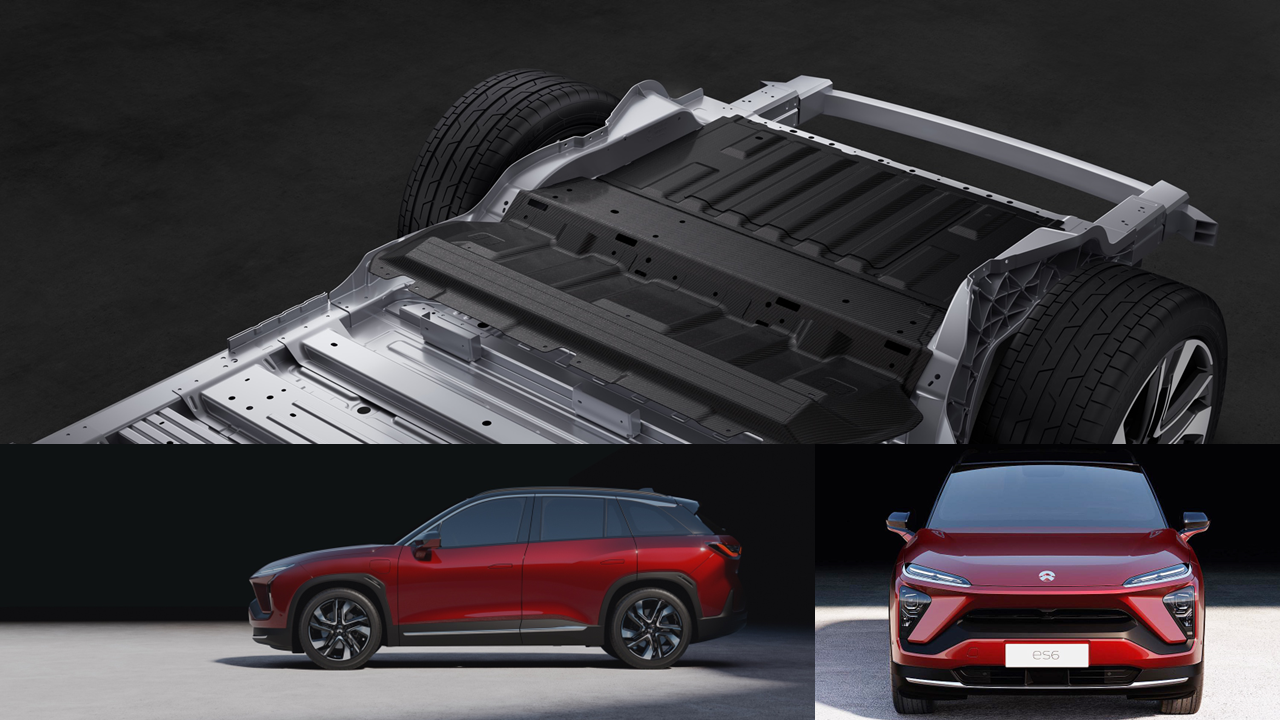
Body Development
Developing innovative body structures today for the unique demands of tomorrow.
The challenges for future vehicle architectures are numerous and complex.
- Modern car bodies are subject to many boundary conditions that must be carefully considered to realize the optimal cost, mass and performance balance
- Platform architectures must accommodate different drive technologies, body shapes and country-specific variants while meeting all the aforementioned conditions
- New and emerging materials and manufacturing technologies must be evaluated very early in the development process and prioritized in a structured and objective manner
- Continuously evolving regulatory requirements for crash performance, must be considered for both incumbent materials as well as alternates requiring rapid material card synthesis and development
The FE approach:
- Structured stage gated mixed material body structure development programs incorporate comprehensive alignment and pre-dimensional analysis to quickly and efficiently focus the team
- Complete toolbox of materials (and material cards) and manufacturing processes including fiber reinforced polymers and composites, metals, specialty materials and their associated joining technologies
- “Simulation Driven Design” accelerates concept development, provides optionality throughout the program and, ensures visibility to meeting cost and performance goals at each stage of the program
- Advanced CAE team with comprehensive material card database supporting analysis of designs with incumbent materials as well as fast-track synthesis of proxy material cards and supervision of modular material card development program
- “Production Based Engineering” delivers a TRL (Technical Readiness Level) appropriate design aligned with the time horizon of your program
- With our experienced body structures development team and global partner network, we manage the development of complete body systems from concept development through component, system and complete body structure prototype production, testing and validation
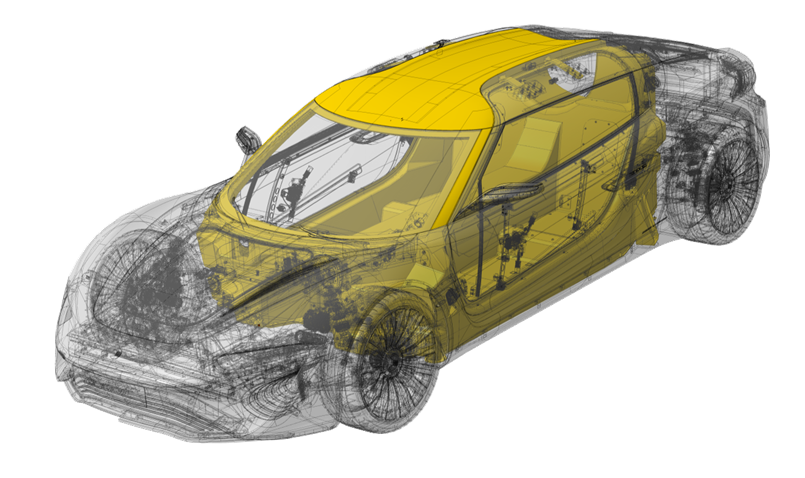
Composite Monocoque Development
A highly integrated mass and cost-efficient solution.
The challenge is effectively bringing together design, material, and process into a complex highly integrated one-shot structural solution.
- Eliminating post forming joints and redundant materials, composite monocoques offer exceptional structural performance and mass savings potential for high performance applications
- In select applications, composite monocoque structures can deliver mass and cost-efficient solutions for higher volume commercial applications
- The highly integrated composite monocoque design requires a unique iterative analysis of design, materials and production processes to optimize load path, geometry and material placement
- A deep understanding of composite materials, processing and simulation is required to develop the virtual validation models required prior to advancing to physical prototype which is particularly important given the relative size and complexity of these structures
The FE approach:
- FE’s history is rooted in the design and development of complete homologated composite monocoque vehicle structures using the latest state-of-the-art materials and manufacturing technologies
- From clean sheet of paper through complete homologated vehicle structures, the FORWARD team leverages “Simulation Driven Design” and “Production Based Engineering” to develop unique designs specific to the application requirements
- Bringing all disciplines together into a powerful solution: established CAE material cards, in-depth material and manufacturing know-how and an experienced monocoque development team are the recipe for success
- Whether a small-series high performance application or a large scale cost-effective new mobility program, together with our strong manufacturing partners, FORWARD is the one-stop provider for the implementation of monocoque projects
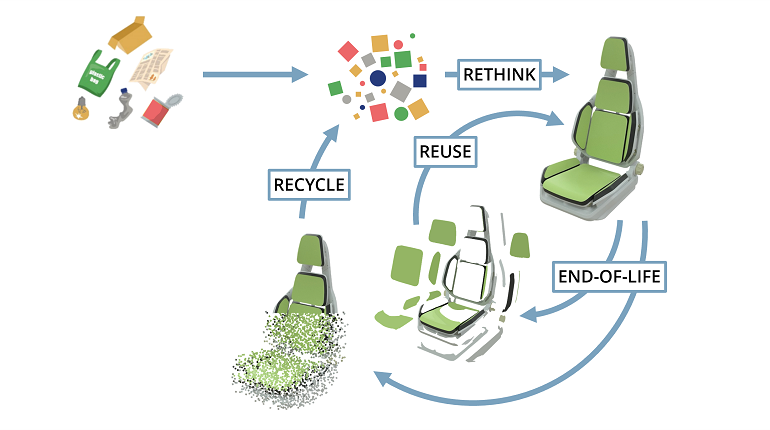
Design for sustainability (DfS)
A capable and holistic approach for the development of sustainable products.
The challenge is how to transition products from historically linear extractive/consumption-based designs to sustainable solutions suited for a circular economy.
- Legislation and societal expectations are evolving as we transition toward a more sustainable society and closer to a circular economy
- Globally, new regulations are being developed for measurement of a products environmental impact and requirements on end-of-life disposition
- Leading OEMs are developing standards which compel upstream suppliers to provide LCA data for inclusion in their product approval submittals
- A lack of interdisciplinary cooperation along the life cycle (Designing in Silos) and a lack of capable end-of-life strategies complicate industry stakeholder’s efforts to develop sustainable designs
The FE approach:
- FORWARD’s DfS Program provides an inter-disciplinary perspective throughout the entire product development process from concept ideation through identification of end-of-life disposition
- Development of a common sustainability framework, based on the latest regulatory and customer requirements, enables the design team to establish clear product specific design targets
- Through interactive workshops, the team leads the comprehensive Life Cycle Assessment (LCA) process providing a clear basis for the entire organization to understand the implications of each design decision
- Drawing from our broad product design experience and the comprehensive and evolving database of sustainable materials and processes, the FORWARD team is able to challenge the target product’s functional requirements and support the development of new sustainable design concepts
- With unique access to a global network of experts and technology providers, the individual elements of a sustainable product design are combined to create an economically successful overall solution

MATERIAL TESTING AND APPLICATION VALIDATION
Material Development and Validation for Future Mobility Applications.
The challenge is qualifying application appropriate materials for new and emerging electric vehicle applications, whether on-road, off-road or in the air.
- Engineers require an expanded toolbox of qualified materials and manufacturing technologies to support next generation vehicles, sub-systems and components
- The pace and complexity of these new applications requires an innovative and responsive partner to develop/apply, execute and analyze material performance under a range of relevant application use and mis-use cases
The FE approach:
- Translating system level performance to component, plaque and material level requirements provides a pathway to quickly and efficiently screen new materials
- Building on our work developing the BOX TRA HVBE Material Screening Program (codified as UL2596) our team of material and application experts is uniquely capable of selecting and/or developing application specific material screening programs for your targeted applications
- A global network of testing partners enables us to deliver critical results quickly in the region that is relevant to you and your customers
Our experience across a broad range of material systems (Thermoset, Thermoplastic, Continuous/Discontinuous, Metallic, Active/Passive, etc.) combined with our hands on collaborative approach provides you the direct insights and results you and your customers require
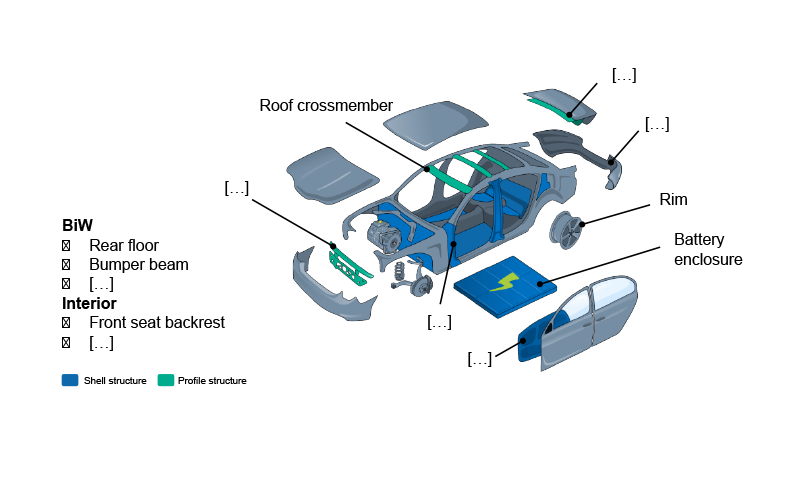
TAME | TECHNICAL ANALYSIS AND MARKET ENGAGEMENT
A proven stage gated approach for concurrent product and market development.
The challenge for new materials and technologies is identifying and prioritizing commercially attractive applications and overcoming the barriers to their adoption.
- For a material or technology to gain traction, it must be clear what applications offer the greatest technical and commercial benefits and where the value proposition is clearly better than the incumbent solutions
- For each application family, the barriers to adoption along the product development cycle and, up and down the value chain, must be clearly identified and strategies to overcome them must be developed and implemented
- Successful adoption of a new material or technology requires the right mix of design, material, and process which, by definition, requires the cooperation of a mix of stakeholders up and down the value chain.
The FE approach:
- A stage gated program, providing insights early and often at every point in the program, to allow the team to efficiently manage resources based on market feedback
- A collaborative program in which there is regular interaction between you, the project team and industry stakeholders
- Objective analysis of the targeted application segments and regions together with an analysis of the benchmark performance against incumbent competing and alternate materials/technologies provides a clear landscape of potentially attractive applications early in the process
- Leveraging the initial technical and commercial analysis the team can objectively down-select to the most attractive applications to highlight the value proposition of the material/technology
- The technical analysis includes a barriers analysis with stakeholder engagement support to evaluate the potential barriers to market adoption and identify candidate collaboration partners to accelerate market adoption
- With a focus on attractive applications that resonate with industry stakeholders the team prepares a compelling virtual demonstrator to effectively present to the market the unique value proposition of the material/technology
- The focused and engaged approach provides a resource efficient program for effective concurrent product and market development

DESIGN FOR structural THERMOPLASTIC ADDITIVE MANUFACTURING (DFA)
Accelerating the development of 3D printed functional structural thermoplastic components
The challenge is to capably and repeatably print functional structural thermoplastic components with the available and emerging materials and additive manufacturing systems
- To varying degrees, current additive manufacturing processes drive anisotropic behavior of the printed components resulting in unique properties as compared to traditional forming processes
- This gap in resultant material behavior is compounded by a lack of industry standards for measuring and certifying materials for additive manufacturing as well as the lack of complete material cards to support simulation of additive manufactured parts
- Beyond material cards, current simulation algorithms are not yet fully capable of accurately representing the unique orthotropic nature of many additive manufacturing systems
- The multitude of variables available to the user of additive manufacturing equipment provides a high degree of flexibility that brings uncertainty and challenges when trying to duplicate product performance across additive manufacturing systems
- While the field of additive manufacturing has been around for decades, the production of functional structural additive manufactured thermoplastic components is relatively new with large gaps in know-how up and down the value chain
The FE approach:
- FORWARD’s foundation is rooted in the design and development of structural components utilizing composite materials, which are intrinsically anisotropic, which is at the heart of the challenge in designing AM components
- Leveraging our experience in Simulation Driven Design of composite intensive structures, the FORWARD team is uniquely positioned to support your development of additive manufactured structural components
- Working with material suppliers and various additive manufacturing technology platforms the FORWARD team is developing material cards to capably support simulation programs
- Working with industry leading software providers, FORWARD is developing more capable best practices for Simulation Driven Design of additive manufactured components
- Working with OEMs, tiers and materials suppliers, FORWARD is supporting targeted structural thermoplastic additive manufactured components to expand the landscape of proven capable applications
- Like the rapidly evolving additive manufacturing landscape, FORWARD’s DfA program continues to evolve, with the common thread remaining the proactive refinement of Simulation Driven Design programs for the capable development of additive manufactured structural thermoplastic components.





